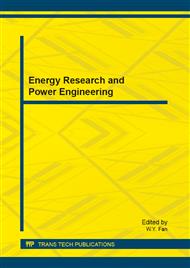[1]
Xiong Guangming , Gong Jianwei etc. high service robot development were summarized and some problems discussed. Machine tools and hydraulic, 2007, 10 (3) : 207-212.
Google Scholar
[2]
Xiong Rong, Fuzhoudong . Service robot structure design based on modular design method [J]. Mechanical and electrical work, 2010, 9 (02) : 135-142.
Google Scholar
[3]
Chenxiang . Intelligent service robot is expected to ordinary people home [J] Robot Technique and Application. 2010, 5(01): 123-126.
Google Scholar
[4]
Guo Tianxiang. 51 singlechip C language tutorial [M]. Beijing: electronic industry press. 101.
Google Scholar
[5]
Pan Chengyi. Indoor wheel service robot hybrid positioning studies (master's degree thesis). Hefei: hefei university of technology, (2010).
Google Scholar
[6]
Hao Guan, Xudong Yan, Yafei Cui. Robot Avoid Obstacle Automatically Based On Fuzzy Control In The Process of Tracing. Advanced Materials Research, 2011(215): 340-343.
DOI: 10.4028/www.scientific.net/amr.215.340
Google Scholar
[7]
Xude, Tanmin, Liyuan. Visual Measurement and Control For Robot[T]. 2008, 2(1): 1-2500.
Google Scholar
[8]
Almansa A, Desolneux A. Vanishing point detection without any a priori information[J]. 2003, 25(4); 502-507.
DOI: 10.1109/tpami.2003.1190575
Google Scholar
[9]
Sonka M, Hlavac V, boyle R. Image processing, analysis, and machine wision[M]. Beijing posts and telecommunications publishing house. (2002).
Google Scholar
[10]
Han , Xu D, Tan M. Visual control method with self-calibrating camera[C]. The 2nd International Applications Modeling, Control&simulations, Jinan, China, June 8-10, 2007: 1612-1616.
Google Scholar
[11]
Bonet B, Geffner H, Planning as heuristic search [J], Artificial Intelligence, 2001, 129 (1-2): 5-33.
DOI: 10.1016/s0004-3702(01)00108-4
Google Scholar
[12]
IAGNEMMA K, SHIBLY H, RZEPNIEWSKI A, et al. Planning control algorithms for enhanced rough-terrainrover mobility[A]. Proceeding of the 6th InternationalSymposium on Artificial Intelligence and Robotics andAutomation in Space[C]. Quebec: Canadian Space A-gency, St-Hubert, (2001).
Google Scholar
[13]
IAGNEMMAK, RZEPNIEWSKI A, DUBOSKY S, et al. Control of robotic vehicles with actively articulated sus-pensionsin rough terrain[J]. Autonomous Robots, 2003, 14: 5-16.
Google Scholar


